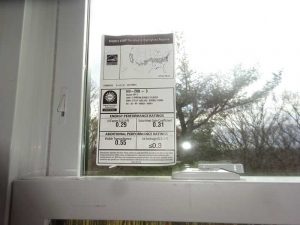Key considerations for designing fenestration systems for success
Laboratory testing reports should be included in the specifications as a required submittal and accompany the specified window product data. Typical testing reports have expiration, as well as retention dates that can be missed if the project team is not paying close attention. Often, contractors will submit documents for the project, including test reports that can range from four to 20 years old. Unless the manufacturer can provide written confirmation that the window’s design has not changed since the date of the test report, indicating the report is still valid to describe the performance of the windows, a recent test report (within four years) should always be provided. This ensures the system meets current test standards and procedures.
Often, designers will propose a window manufactured domestically based on aesthetics, track record, or familiarity with a certain brand. However, the contractor will sometimes propose a foreign alternate during the bid phase, often due to cost. Foreign-manufactured windows are typically tested to different standards that may not be equivalent to U.S. testing requirements.
For example, windows passing European (EN) test standards such as DIN EN 12208, Windows and Doors – Watertightness – Classification, and DIN EN 12207, Windows and Doors – Air Permeability – Classification, do not equate to passing American test standards such as ASTM E331, Standard Test Method for Water Penetration of Exterior Windows, Skylights, Doors, and Curtain Walls by Uniform Static Air Pressure Difference, or ASTM E283, Standard Test Method for Determining Rate of Air Leakage Through Exterior Windows, Skylights, Curtain Walls, and Doors under Specified Pressure Differences Across the Specimen.
If this substitution is approved, the owner will buy windows that are not the same performance as what they bought in the original design; although it is worth noting performance may end up being better in some cases.

The National Fenestration Rating Council (NFRC) product certification is necessary for windows to be installed in the U.S, as stated in the International Energy Conservation Code (IECC). The U-factor is a key element for new fenestration products and is listed on the product-specific NFRC label. NFRC labels list energy performance ratings for the entire fenestration product, which also can include the solar heat gain coefficient, visible light transmittance, and air leakage (Figure 1).
Code language always refers to the fenestration product U-factor, but often a center-of-glass (COG) U-factor is sometimes the only measurement submitted for a product. It is important for designers to be aware of this and the associated differences, as a COG U-factor will show much better performance than the U-factor for the entire window product, which includes window framing and other internal components. Designers should specify both values or, at minimum, the U-factor required for the entire fenestration product. As described, products tested to foreign standards for thermal performance may not be equivalent to their American counterparts and may require supplementary testing. If additional testing is required for a substitution, architects and designers can request for the product to be tested by an approved third-party laboratory. The testing should be paid for by the manufacturer or the contractor who proposed the change.








